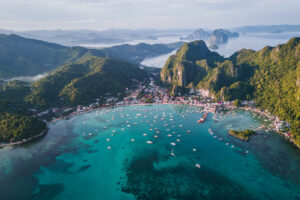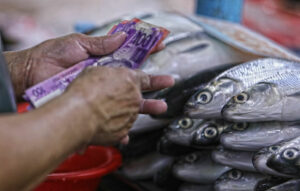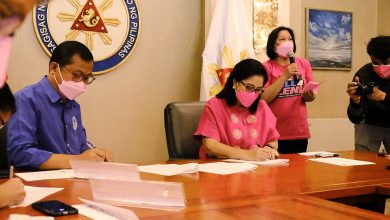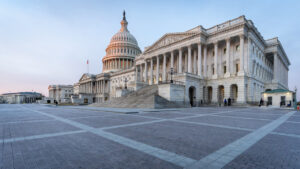The state of tourism in the nation

In his second State of the Nation Address on July 24, President Ferdinand Marcos, Jr. touched on several issues that I have mused about many times in this column. Due to space limitation, I will comment only on his report on tourism in today’s column.
On tourism, the President said:
“Tourism is not only an important economic development tool but the abundance of opportunities that the sector creates in terms of regular employment and even job creation at the grassroots level is undeniable.
“To boost our tourism industry, we will first and foremost make basic developments such as road improvements for easier access to tourism spots. We will also upgrade our airports and create more international airports to help decongest the bottleneck in the Manila airport.
“We will also make it more convenient for travelers to go around the country, even to remote areas to help promote undiscovered tourist spots. This program will be led by the Department of Tourism, together with the Department of Public Works and Highways.”
I join the members of both chambers of Congress in applauding the President in boosting the tourism industry. Tourism is a powerful force in the socio-economic development of many countries, both mature industrial economies and developing economies. Tourism is either the first or the second largest business for more than half of the 178 nations represented in the United Nations.
As he said, tourism is an important element of the Philippine economy. It brings in the much-needed US dollars into the country, receipts reaching $3.68 billion in 2022. It generates hundreds of thousands of jobs. Tourism-related industries spawn other industries. The hotels, restaurants, and shops give impetus to the construction industry, the restaurants create demand for farm products, and the souvenir shops and retail establishments in the area promote the handicraft industry.
But the President has to do much more than what he promised to do in his State of the Nation Address. In 2004, I was commissioned to conduct, under a grant from the United States Agency for International Development, a study of the tourism industry with a view to identifying areas of adjustments and upgrading.
I was able to identify the facets of the country that had drawn the most negative comments from visitors. They were the poor security and safety measures for tourists; inadequate infrastructure like airports, seaports, and bus terminals in Metro Manila and in the tourist destinations outside the National Capital Region; low-class domestic land and sea transportation systems; polluted air and poor sanitary conditions of the environs; the horrendous traffic in Metro Manila; and arrogant Immigration and Customs personnel at points entry into the country.
A reading of today’s newspapers and viewing of the evening TV newscast indicate that not only have those areas of concern remained in their sorry state, but they have also deteriorated further. The Ninoy Aquino International Airport, particularly Terminal 1, now ranks among the “Worst Airports in the World.” Seaports are only slightly better than wharves in fishing villages. They are not suitable even for traveling local businessmen. Foreign tourists are turned away by the shabby appearance of these ferry terminals.
Roads to tourist destinations are too narrow to carry a large volume of tourists and too bumpy for their comfort. Those that lead to the beach or mountain resorts are unsafe and are bumpier. The physical conditions of the bus terminals are pathetic. They are cramped, toilets are dirty, and appointments uncomfortable.
But more than improving roads and upgrading airports and seaports, the quality of tourism service needs to be raised several levels. Our tourism service is of low quality.
One of the findings of my study is that many personnel manning immigration windows and customs counters at the airports are arrogant. Not only that, but they are also sleazy. That is what has been my own personal experience. I traveled a lot when I was country manager for a multi-national company.
In 2009, I and my family went on a cruise of the Baltic Sea. Of the 2,000 plus employees of the Emerald Princess, 62% were Filipinos, most of them waiters, kitchen staff, and room boys. I asked some of them why the Princess Cruises had not sailed to Manila. This was their shocking story: “It did once but management of the cruise line decided to delist Manila and any Philippine port from the itinerary of any of its ships after its horrible experience with Customs officials. When one of its ships docked in Manila, the Customs agents confiscated all the liquor bottles in the ship’s bars saying that the ship had no license to sell or serve liquor or alcoholic beverages in Philippine territory. The Customs men justified the confiscation by saying the goods were untaxed items.”
But the No. 1 negative comment of visitors to the Philippines was the lack of safety measures outside airports and seaports. Many visitors to the Philippines warn their relatives and friends of unsavory characters waiting outside airports and seaports ready to pounce on tourists.
The huge traffic jams that occur in the main thoroughfares of Metro Manila every day have caused Cruise Lines International Association, Inc. to issue this warning to its passengers: “Cruise ships dock at the Port of Manila. From there, you can take a bus or cab to downtown Manila. Manila is known for its congested thoroughfares, so it’s wise to choose your transportation options carefully. Taxis are everywhere in Manila, and the meter runs in absurdly low increments of $0.03! However, don’t let a driver convince you that the meter is broken, as they will often try to do, in order to charge you triple the fare.”
A major deterrent to the growth of the tourism industry was the lack of world-class facilities in distant tourist destinations, diminishing their attractiveness. Thanks to the private sector there is now a boom of deluxe hotels in those distant tourist destinations. But transportation to them is still limited or inconvenient. Flights to island resorts and adventure sites are limited in number, if there are any. Unsafe makeshift boats and plain outriggers carry tourists to destinations that are not accessible by air. Not only that, they are not comfortable conveyances, even for a short ride.
The supply of hotel and resort manpower with the skills required to service tourists is way below the current demand for such personnel. Many universities and colleges, including those in the provinces, offer tourism-related courses. But what is badly needed, according to former Tourism Secretary Narzalina Lim, are training programs for waiters, cooks, room boys/girls/gays, and souvenir shop salespersons similar to the training programs of cruise ship companies.
The main function of the secretary of Tourism is to develop tourist destinations and attractions and the support infrastructure and services (product development) and to promote them (advertising and sales promotions). That is why I originally recommended back in 2004, after I completed my study of the tourism industry, that a marketing professional, which many people mistakenly think is the same as an advertising practitioner, be appointed as secretary of Tourism. A marketing person is much more than an advertising or sales person. The marketing professional creates value-satisfying goods and services that consumers — tourists in the case of the tourism industry — will want to buy.
After realizing that the authority of the secretary of Tourism does not extend to many components of the tourism industry like the destinations and the supporting infrastructure, I now suggest that the secretary of Tourism be both a marketing person and a politician, the persuasive kind respected by both political allies and foes.
He/she also has to badger Cabinet members, governors, and mayors to upgrade the infrastructure and domestic transportation system, clean the environment, improve the peace and order situation, and discipline Immigration and Customs personnel at points of entry to the country. This is where the politician’s savvy and network would serve him/her in good stead.
The current secretary of tourism does not have a marketing or advertising background. She is a politician but not the persuasive kind. She is the authoritarian kind, as manifested by her decision to stick to her “Love the Philippines” slogan in total disregard of the advice of experts in the field of promotional campaigns.
Oscar P. Lagman, Jr. is a retired corporate executive, management professor, and business consultant.




